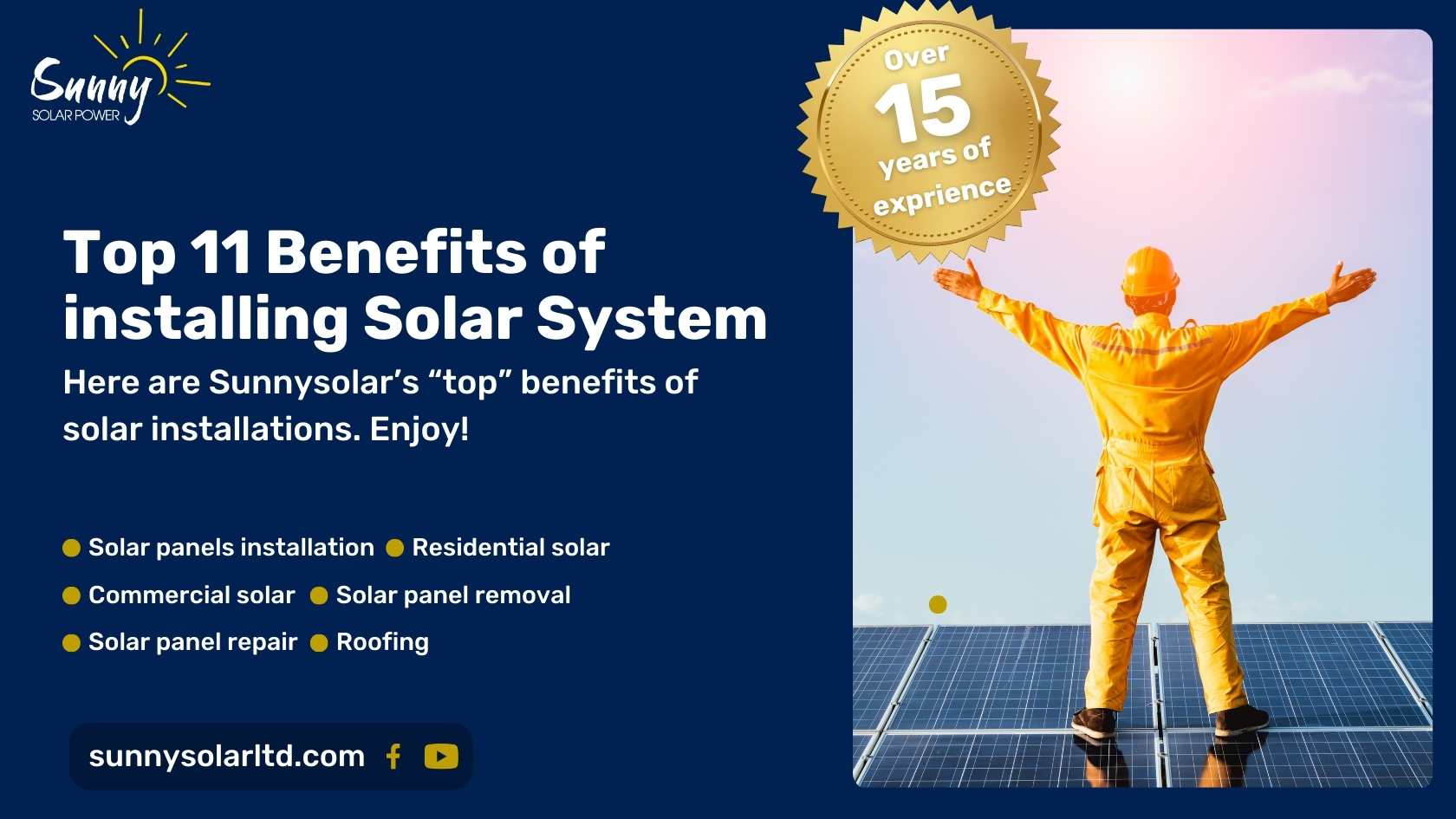Solar power is clean, abundant, and- after you’ve installed your solar panels – free. It’s also getting more efficient every day, and that efficiency is starting to breed some benefits to solar customers that they may not have considered just a few short years ago. Here are Sunnysolar’s “top” benefits of solar installations. Enjoy!
1. Save Money on Energy Bills
When people talk about home solar power systems, one of the most common topics is the cost. Solar power system prices have been decreasing dramatically over the last several years though, so it might be more appropriate to talk about the savings on energy bills that is now possible. One analysis found that homeowners could save tens of thousands of dollars by investing in home solar over twenty years.
It was done in 2011, and solar panels have decreased in price since then. So, the potential savings from home solar is even greater. There’s another important that was missing from the analysis. Solar panel technology is gradually improving, meaning that each solar panel installation is capable of generating more electricity. If that trend continues, we will need fewer solar panels for a home system. Then, the cost of a whole system will be even less. Currently, because solar panels are affordable and they will save money on energy costs over time, it almost makes no sense to invest in a home solar system.
If someone asked you if you would like to save $20,000, there would probably be at least some interest, if not a lot. Mention solar power though, and the response might be skepticism. That’s an outdated view though. It might take some time for society to come around to the fact that sunnysolar has become readily available. Solar power for many homeowners is now something of a ‘no-brainer’.
2. Get Rebates and Tax Credits
In addition to the money you can save by paying less for energy over the long term, you may be eligible for various rebates and taxes depending on where you live and what government programs are available. If there are programs like these that are active where you live, the cost of your home solar system will be even less.
Federal Rebates for Solar
Residential Energy Efficient Property Credit
- This tax credit is 30 percent of the cost of alternative energy equipment that you installed on or in your home.
- Qualified equipment includes solar water heaters, solar electric equipment, and wind turbines.
- There is no limit on the amount of credit available for most types of property. If your credit is more than the tax you owe, you can carry forward the unused portion of this credit to next year’s tax return.
State Rebates for Solar
Look up any potential rebates available in your state using the Database of State Incentives for Renewables and Efficiency, located at DSIRE.org. This website is funded by N.C. Solar Center at N.C. State University and the Department of Energy.
City and Local Rebates for Solar
Some cities and municipalities have home or business solar power rebate programs through their local governments or, in some cases, local utilities. Not all cities have these, but some do, such as Boulder, Colorado, which you can read more about at this link.
3. Solar Power Is Better for Human Health
We often hear that solar power is better for the environment- because it is. What isn’t mentioned enough is that it is better for our health, as well. Pollution from burning coal power plants results in thousands of human deaths annually. It also is linked to lower intelligence in hundreds of thousands of children born every year, due to increased mercury levels in their blood, “Researchers estimate that between 317,000 and 631,000 children are born in the U.S. each year with blood mercury levels high enough to reduce IQ scores and cause lifelong loss of intelligence.”
Lung cancer, asthma, and lung disease are some of the respiratory conditions caused by coal emissions. The normal lung development of children can also be disrupted.
Heart disease is the number one killer of Americans, and we know that things like junk food and lack of exercise are the main contributors. However, air pollution from burning coal and fuel also is a significant factor in heart disease. “Pollutants produced by coal combustion lead to cardiovascular disease, such as arterial occlusion (artery blockages, leading to heart attacks) and infarct formation (tissue death due to oxygen deprivation, leading to permanent heart damage),” says PSR. “… cardiac arrhythmias and congestive heart failure. Exposure to chronic air pollution over many years increases cardiovascular mortality.”
So, it sounds like a good idea not to live near a coal-burning power plant, and that’s right. The way forward for all of us is to transition gradually away from coal, and permanently. Fortunately, the cost of sunnysolar systems has been decreasing steadily, which means several things are happening. Number one, more and more homeowners are investing in their own solar power systems. This trend is reinforcing the decrease in cost, because it is helping stabilize an emerging market. In other words, by investing in solar power, homeowners are helping to grow a market that has to compete with established industries like coal and oil.
Even the American Lung Association is getting in on the act, having released a statement about air pollution from coal burning. Charles D. Connor, president and CEO of the American Lung Association said, “It’s time that we end the ‘toxic loophole’ that has allowed coal-burning power plants to operate without any federal limits on emissions of mercury, arsenic, dioxin, acid gases such as hydrogen chloride and other dangerous pollutants.”
The ALA is hardly a radical organization. It is very much part of the mainstream society and has advocated for better public health for a long time. It’s not a ‘green’ organization with an environmental agenda either; its focused on helping Americans to be healthier.
4. Home Solar Power Is Better for the Environment
If you care about reducing your carbon footprint and curbing climate change, then solar power is a good alternative to fossil fuels. Climate change was very controversial a number of years ago. Today, the controversy seems mostly finished. In 2012, a NOAA report stated that heat waves were linked to climate change, “High temperatures, such as those experienced in the [north central and northeast] U.S. in [summer] 2012 are now likely to occur four times as frequently due to human-induced climate change.”
It’s important to note that the NOAA is a non-partisan federal agency, not an ideologically-based activist group. One of the old knocks against some climate change information was that it was coming from left-of-center advocacy organizations that were perceived as being radical. NOAA is a non-partisan scientific research organization.
5. Send Power Back to the Grid
Net-metering is available in many US states, but not all. If it is and you elect to get a home solar system, you may be able to sell some of your solar back to the grid in exchange for credits from a utility company. A State of California government page called “Go Solar California” explains some of the key net metering benefits for consumers:
- Allows customers to zero-out their bills.
- Credits customer accounts at full retail rates.
- Accurately captures energy generated and consumed, providing customers with annual performance data.
6. Increase Your Home’s Value
In an article published by the tech-watchers at CNET, a recent study found that installing a home solar power system can increase the value of a home can by 3.5%. While that percentage might not sound like much, let’s look at what it means in terms of dollars. For a $100.000 home the value increase would be $3,500. For a $200,000 home it would be $7,000 and for a $300,000 home it would be $10,500. $14,000 would be the increase for a $400,000 home. $17,500 would be for a $500,000 house. You may have noticed that these increases could partially offset the cost of installing a home solar system.
7. Sell Your Home Faster
A recent study by the National Renewable Energy Laboratory found that solar panel-equipped homes sold about 20% faster than non-solar homes. Selling a home sometimes needs to be done quickly, if a move is required for a new job or to be closer to family members. A faster sale is more efficient because it saves time.
8. Cool Your Rooftop in Summer and Keep Heat in During Winter
Yes, you read that right. In addition to making energy, sunnysolar systems can also shade your roof during summer to keep it cooler and help retain heat in your house when it is cold outside. These benefits were documented by researchers at the University of California-San Diego (UCSD).
“In a study in an upcoming issue of the journal Solar Energy, Kleissl and his team published what they believe are the first peer-reviewed measurements of the cooling benefits provided by solar photovoltaic panels. Using thermal imaging, researchers determined that during the day, a building’s ceiling was 5 degrees Fahrenheit cooler under solar panels than under an exposed roof. At night, the panels help hold heat in, reducing heating costs in the winter.” The same study found that shade from solar panels saved money too by reducing the cost of cooling it during hot weather. The cost reduction was equivalent to about a five percent discount on the cost of the solar power system.
9. Charge an EV or Plug-in Hybrid at Home with Clean Energy
A couple living in the Seattle area uses a sunnysolar system to power their home and charge their Nissan Leaf, which is an all-electric vehicle. There are couple of key points about their situation. Number one they are using solar power in a northern area that doesn’t have a huge number of sunny days, but they are still generating enough electricity using solar power. They also were taking advantage of local government programs that sometimes even paid them to generate their own electricity. They started using their home solar system several years ago, when solar panels were most costly. Today, setting up a similar system could be much cheaper.
Of course, there are people who don’t want the whole solar power + EV package, so solar power alone will suffice, but some of these examples are inspiring. Recently, a Michigan couple with a home solar system and a Tesla Model S were written about in a news story– and, while most of us can’t afford the Tesla, solar power is in reach for many today.
Other EVs, however, are priced competitively to “regular” cars, so a home solar system powering an electric car might be a more practical solution than you think.
10. sunnysolar Systems are at Their Most Affordable
A Harris interactive poll found that as many as 97% of the respondents overestimated the cost of installing sunnysolar panels. 97% is almost everyone that was included in the research. It’s true that the poll was conducted two years ago, so perceptions might have changed. But have are they anywhere near being in line with the true cost of solar? From 2011 to 2013, solar power costs dropped by 60%. That period includes the time when the Harris poll found that almost everyone in their research was overestimating the cost of solar. Since 2008, solar power has decreased in cost by 80%.
So, it seems that it is reasonable to say that maybe most Americans still don’t know how affordable home solar systems have become. The funny thing is that when gas prices at the pump rise, people tend to get very upset. The news media also gets in on the action doing multiple stories about how the extra cost is hurting consumers. When solar power drops much more in cost, is there the same attention?
11. Sunlight Has the Highest Potential of Any Renewable Energy Source
What comes to mind when you think of “home solar”? Rooftop solar panels?
That’s exactly what home solar generally refers to, but there’s one piece of missing information that needs to be added: photovoltaics, or PVs. Photovoltaics are the actual energy cells in solar panels that convert photons from sunlight to electricity – and the abundance of sunlight makes it Earth’s most plentiful energy resource. Of all “clean” and “renewable” energy sources, then, sunlight has the highest energy potential.
At the moment, however, most of our electricity today is still generated by coal, oil, and nuclear power. That’s not because they’re better, cheaper, or more efficient, however. Researchers at Sandia National Labs wrote something to that effect, stating that sunlight “… more energy striking the earth’s surface in one and a half hours than worldwide energy consumption in the year 2001 from all sources combined.”
The potential they are talking about is that of sunlight. It’s really massive, perhaps to a degree that it is hard for us to imagine. Some people might still want to push back and say it’s still a theoretical potential, but what we are seeing today with more and more affordable sunnysolar systems is showing that is not true. That’s what is exciting. It no longer is only about what research scientists say about solar, it’s happening right now for people like us that don’t have Ph.Ds in physics. In other words. home solar has never been more accessible. We are living in a time of transition in terms of where are energy is coming from.
Transition, and- thanks to resources like the world wide web and social media- empowerment. We can now take real steps, on our own, to tap into the power of the sun and free ourselves from the costs- physical, medical, and monetary costs- of “conventional” energy.



